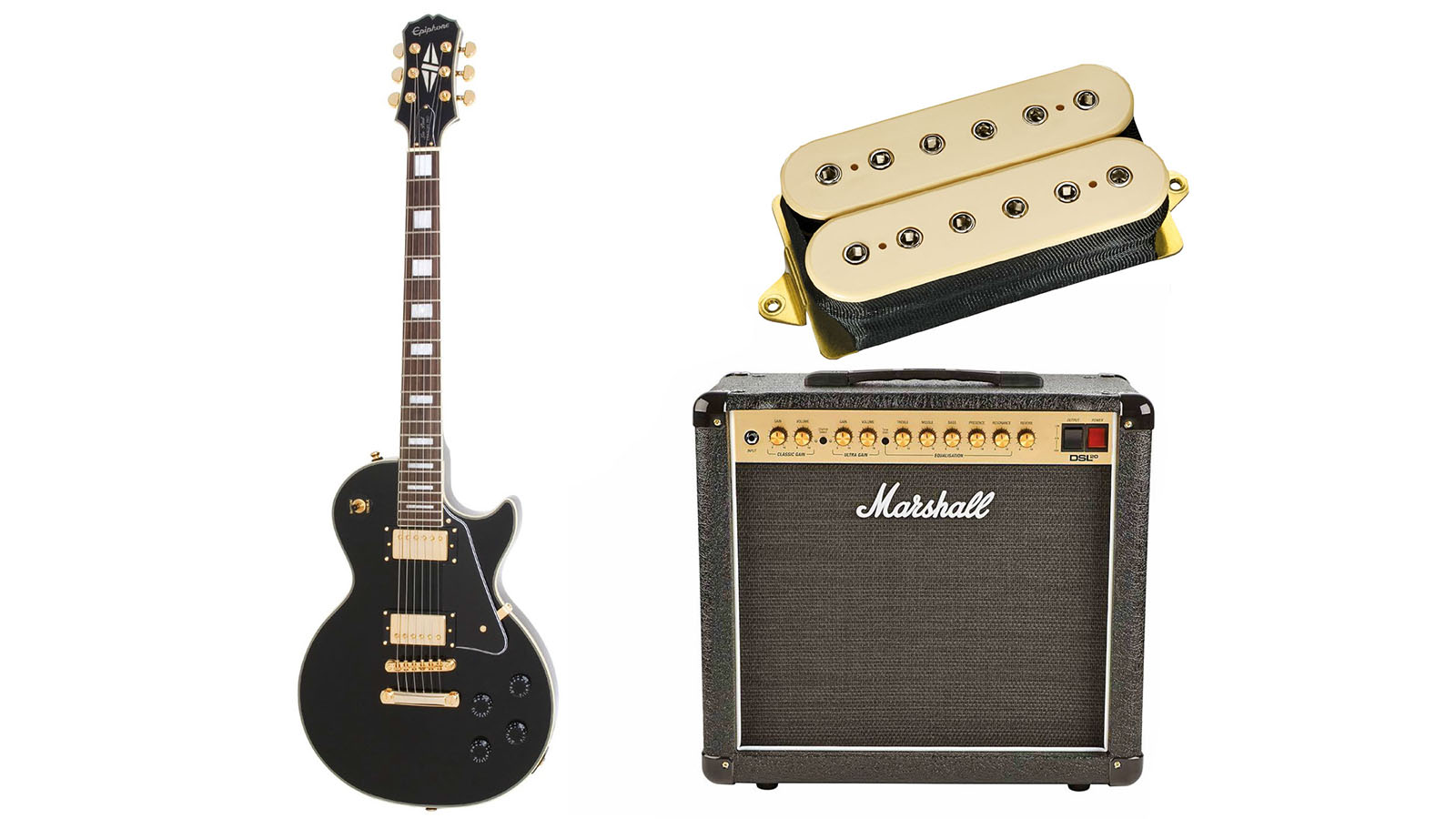The secrets behind Al di Meola's tone on Race with Devil on Spanish Highway
How to capture the sonic magic of this breakneck proto-shred masterpiece

Over the course of 37 minutes and six songs, Al Di Meola explored a dazzling variety of styles (jazz, flamenco, Latin, hard rock) and sounds (various electric and acoustic textures) on his second solo album, Elegant Gypsy. The album has become a jazz-rock fusion classic with guitarists, thanks to two standout tracks: the blazing acoustic duet with Paco de Lucia - Mediterranean Sundance - and the breakneck proto-shred masterpiece Race with Devil on Spanish Highway, which rocked harder than most metal circa the album’s 1977 release date.
Like many rock guitarists of that era (and unlike most of his jazz guitar peers), Di Meola favored a Gibson Les Paul and Marshall amp for his electric rig, using a 1971 Les Paul Custom customized with DiMarzio Dual Sound pickups and coil-tapping switches and a 50-watt Marshall half stack to generate the appropriately heavy distorted tones for Race with Devil.
However, unlike most rock guitarists, he dialed the amp’s treble and presence controls almost all the way down and turned the midrange and bass controls all the way up to give individual notes voluptuous body with thick midrange even when he played lightning-fast palm-muted runs. Di Meola’s Marshalls were likely USA export models shipped with 6550 tubes instead of EL34s, which provide tighter and brighter overall tone compared to the inherent warmth and compression of EL34 tubes.
Effects can be heard throughout Elegant Gypsy, albeit sparingly. Flanging appears on a long passage in Flight Over Rio, and synth-like textures generated by a Mu-Tron Bi-Phase grace Di Meola’s main solo in Elegant Gypsy Suite. On Race, effects are used on a handful of brief overdubbed accents, including tape or analog delay echoes at 0:31, 0:53 and on the intro and outro of the solo that starts at 2:54.
An octave-down effect, possibly a Mu-Tron Octave Divider or MXR Blue Box, is also heard on the overdubbed six-note descending line at 0:53. Reverb was likely courtesy of the EMT 140 plate reverb at New York’s Electric Lady studios, where Di Meola and house engineer Dave Palmer recorded the album.
However, most of the guitar’s tonal variety on Race is produced by simple variations in volume control settings while both pickups are engaged. For fatter, singing tones on solos, Di Meola backed down the bridge humbucker’s volume knob, and for a brighter attack with a hollow, horn-like midrange he used both pickups at full volume, sometimes backing down the neck pickup’s volume knob to further emphasize attack.
Get the sound, cheap!
- Epiphone Les Paul Custom Pro
- DiMarzio Super Distortion humbuckers
- Marshall DSL20C combo

TONE TIP: Use the Marshall’s Classic Gain channel and dial in a moderate amount of gain. The Super Distortion pickups should provide ample brightness and clarity, even with the amp’s treble and presence controls all the way off. If the tone is too dark, boost the treble control sparingly.
Get The Pick Newsletter
All the latest guitar news, interviews, lessons, reviews, deals and more, direct to your inbox!
Original gear
GUITAR: 1971 Gibson Les Paul Custom with DiMarzio Dual Sound pickups (bridge pickup only for main riffs, both pickups for solos and melodic overdubs), Neck Volume: 10, Neck Tone: 10, Bridge Volume: 10 (riffs and melody/solo beginning at 5:11 and 5:31) or 5 (first and second solo, melodic overdubs from 3:44 to 4:40), Bridge Tone: 10
AMP: c. 1972-75 Marshall Model 1987 JMP50 head with 6550 tubes (Presence: 0, Bass: 10, Middle: 10, Treble: 1, Volume I: 6, Input I top left) with Marshall 1960A slanted 4x12 speaker cabinet with Celestion G12M-25 speakers
EFFECTS: Unknown octave down effect (possibly Mu-Tron Octave Divider; Mix: 5, Tone: 7, Ringer: On, Stabilize: On, Effect: On, Bass Only: Off), unknown delay (possibly Roland Space Echo; Delay Time: 165ms, Feedback/Repeats: 8, Mix: 50%)
STRINGS/TUNING: Ernie Ball Super Slinky .009-.042/Standard
PICK: Fender Medium
Chris is the co-author of Eruption - Conversations with Eddie Van Halen. He is a 40-year music industry veteran who started at Boardwalk Entertainment (Joan Jett, Night Ranger) and Roland US before becoming a guitar journalist in 1991. He has interviewed more than 600 artists, written more than 1,400 product reviews and contributed to Jeff Beck’s Beck 01: Hot Rods and Rock & Roll and Eric Clapton’s Six String Stories.
“Every tour was the best I could have done. It was only after that I would listen to more Grateful Dead and realize I hadn’t come close”: John Mayer and Bob Weir reflect on 10 years of Dead & Company – and why the Sphere forced them to reassess everything
“Last time we were here, in ’89, we played with Slash on this stage. I don't remember what we did...” Slash makes surprise appearance at former Hanoi Rocks singer Michael Monroe's show at the Whisky a Go Go



![John Mayer and Bob Weir [left] of Dead & Company photographed against a grey background. Mayer wears a blue overshirt and has his signature Silver Sky on his shoulder. Weir wears grey and a bolo tie.](https://cdn.mos.cms.futurecdn.net/C6niSAybzVCHoYcpJ8ZZgE.jpg)

![A black-and-white action shot of Sergeant Thunderhoof perform live: [from left] Mark Sayer, Dan Flitcroft, Jim Camp and Josh Gallop](https://cdn.mos.cms.futurecdn.net/am3UhJbsxAE239XRRZ8zC8.jpg)






